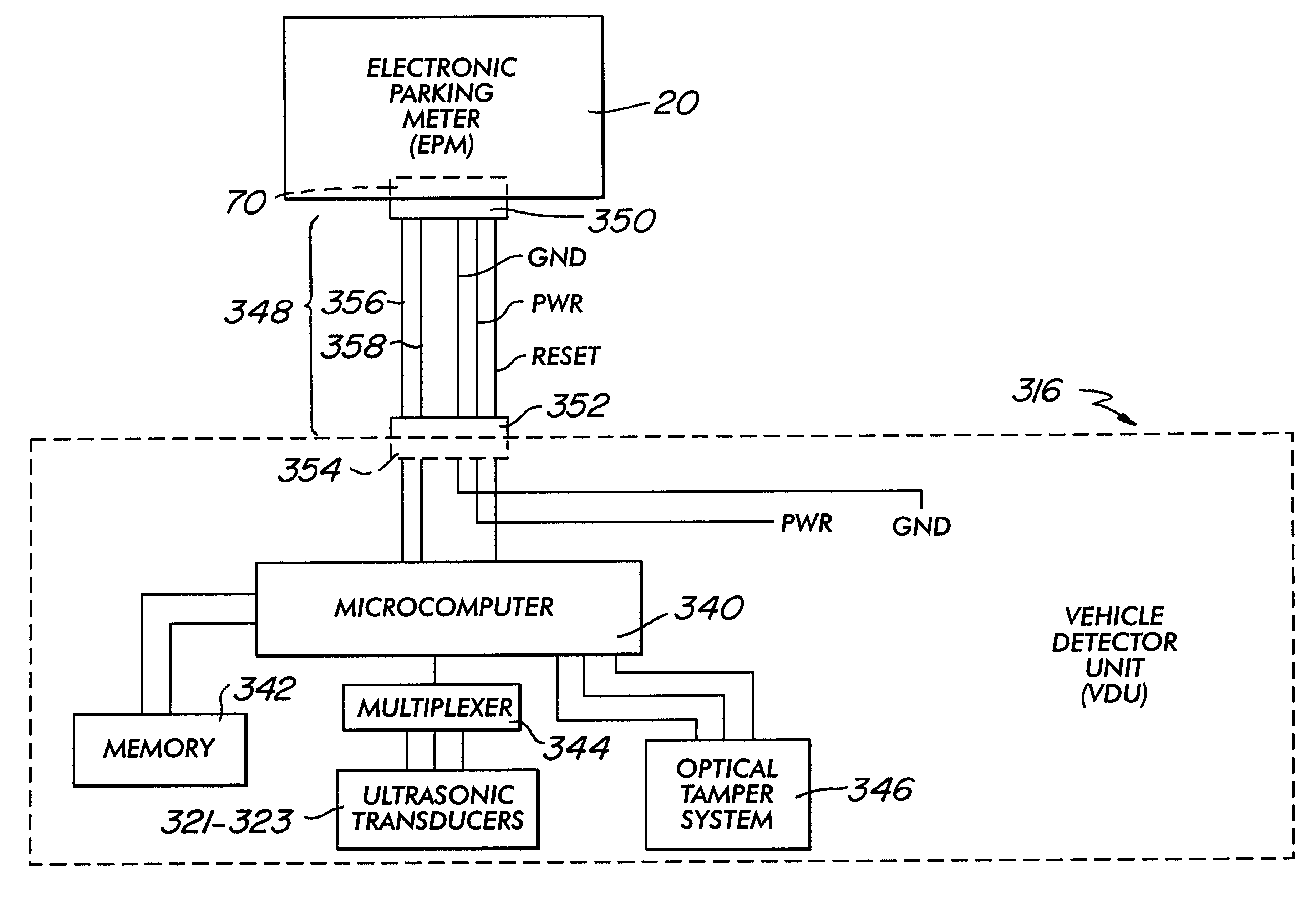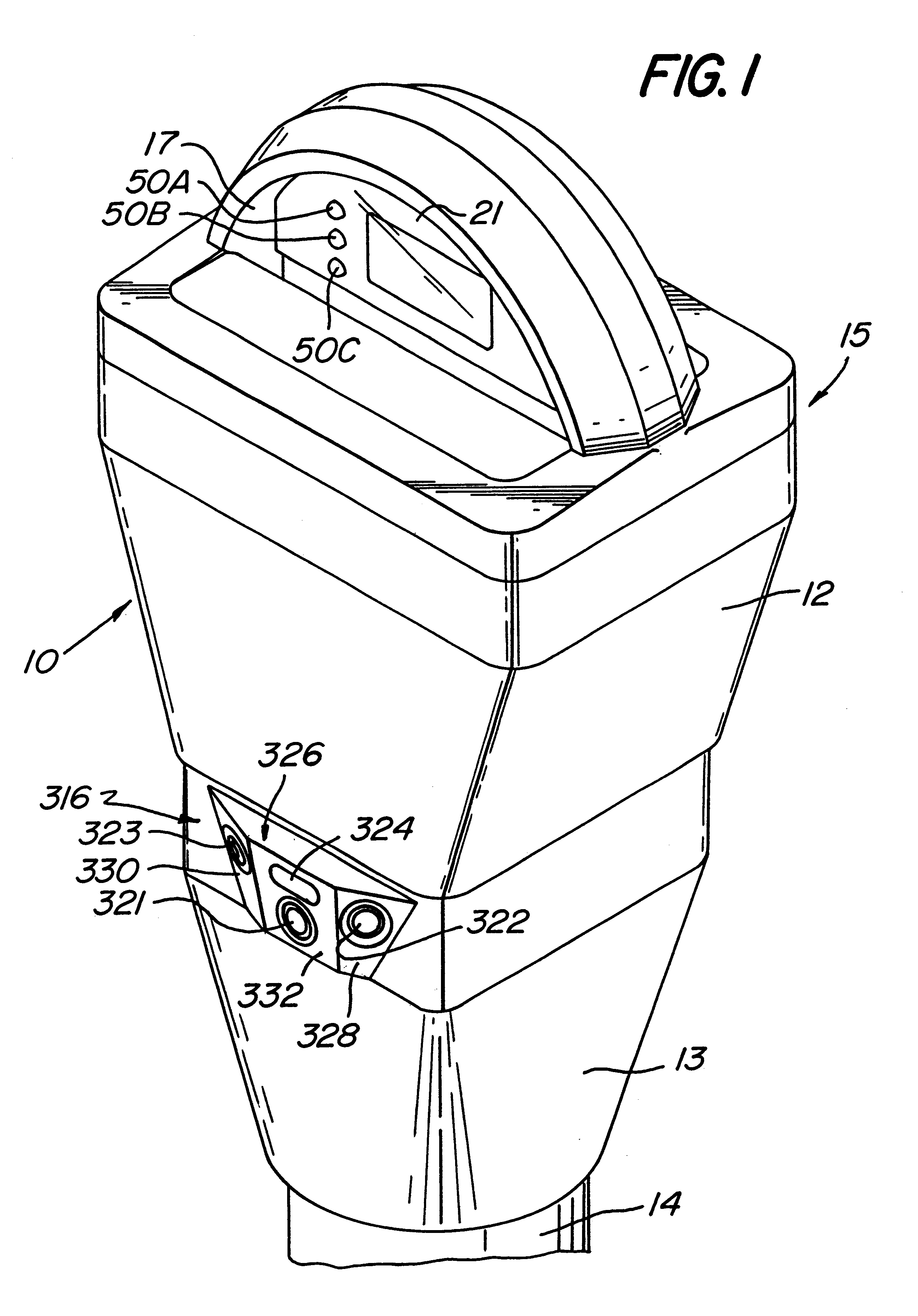Vehicle-detecting unit for use with electronic parking meter
a technology for parking meters and vehicle detection, which is applied in traffic control systems, transportation and packaging, instruments, etc., can solve problems such as tampering with meters, obstacles in the meter/space environment, and the inability to achieve actual results
- Summary
- Abstract
- Description
- Claims
- Application Information
AI Technical Summary
Benefits of technology
Problems solved by technology
Method used
Image
Examples
Embodiment Construction
Referring now in greater detail to the various figures of the drawing wherein like reference characters refer to like parts, a vehicle detector unit (hereinafter "VDU") for use with electronic parking meters constructed in accordance with the present invention is shown generally at 316 in FIG. 1. The VDU 316 issued in conjunction with a parking meter 10 to provide the parking meter 10 with vehicle detection capability. As shown most clearly in FIG. 1, the parking meter 10 comprises a parking meter housing 12 that is supported at the parking space location (not shown) by a stanchion 14. The parking meter housing 12 is coupled to the stanchion 14 via a vault 13 (which receives the deposited coins) and the VDU 316.
The operative part of the parking meter, hereinafter known as the electronic parking meter (EPM) (see FIG. 5; an example of such an EPM is the tool-less parking meter mechanism, TLPMM 20, disclosed in A.S.N. 09 / 231,718 but it should be understood that any electronic parking m...
PUM
 Login to View More
Login to View More Abstract
Description
Claims
Application Information
 Login to View More
Login to View More - R&D
- Intellectual Property
- Life Sciences
- Materials
- Tech Scout
- Unparalleled Data Quality
- Higher Quality Content
- 60% Fewer Hallucinations
Browse by: Latest US Patents, China's latest patents, Technical Efficacy Thesaurus, Application Domain, Technology Topic, Popular Technical Reports.
© 2025 PatSnap. All rights reserved.Legal|Privacy policy|Modern Slavery Act Transparency Statement|Sitemap|About US| Contact US: help@patsnap.com



